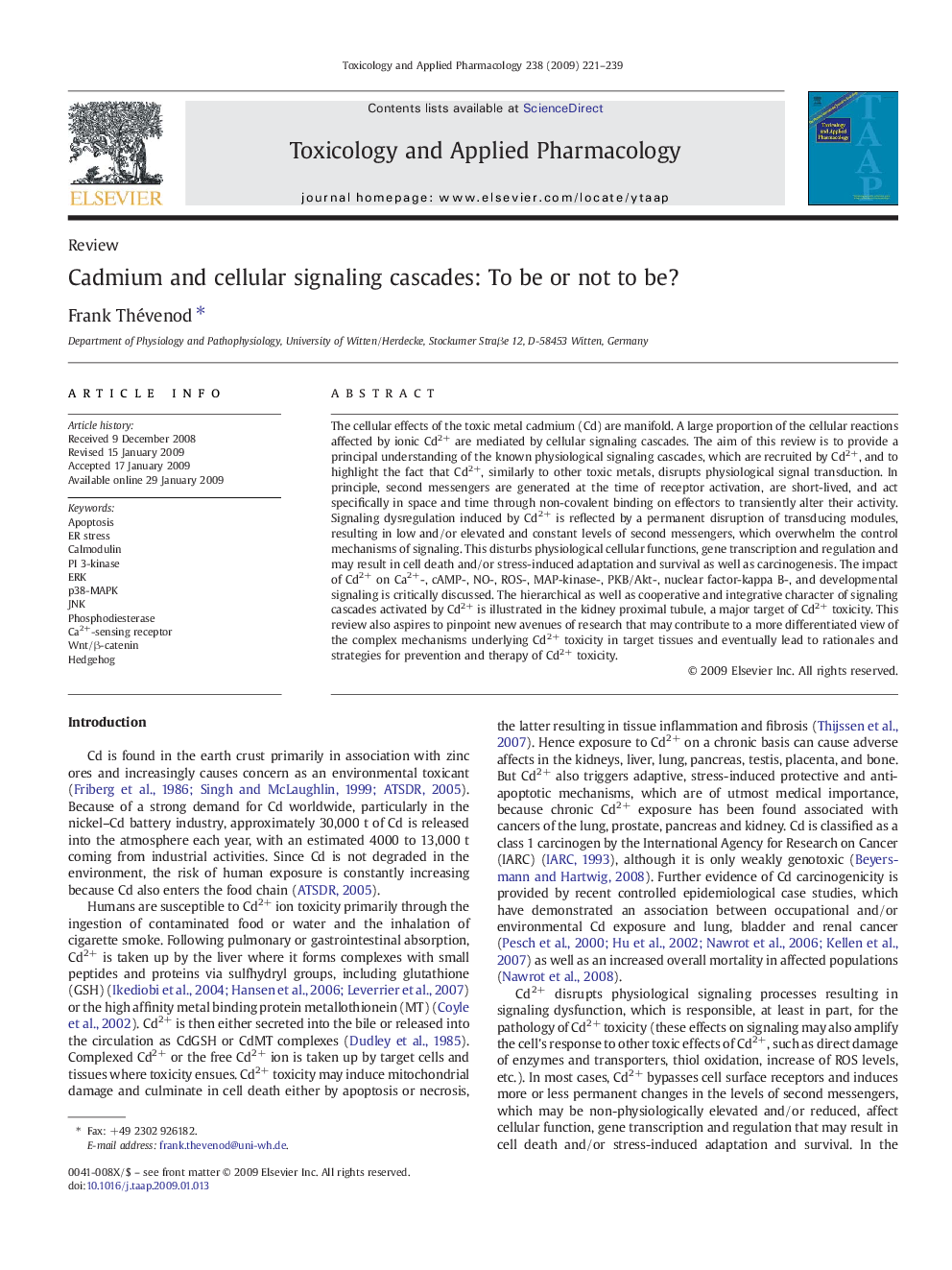| Article ID | Journal | Published Year | Pages | File Type |
|---|---|---|---|---|
| 2570562 | Toxicology and Applied Pharmacology | 2009 | 19 Pages |
The cellular effects of the toxic metal cadmium (Cd) are manifold. A large proportion of the cellular reactions affected by ionic Cd2+ are mediated by cellular signaling cascades. The aim of this review is to provide a principal understanding of the known physiological signaling cascades, which are recruited by Cd2+, and to highlight the fact that Cd2+, similarly to other toxic metals, disrupts physiological signal transduction. In principle, second messengers are generated at the time of receptor activation, are short-lived, and act specifically in space and time through non-covalent binding on effectors to transiently alter their activity. Signaling dysregulation induced by Cd2+ is reflected by a permanent disruption of transducing modules, resulting in low and/or elevated and constant levels of second messengers, which overwhelm the control mechanisms of signaling. This disturbs physiological cellular functions, gene transcription and regulation and may result in cell death and/or stress-induced adaptation and survival as well as carcinogenesis. The impact of Cd2+ on Ca2+-, cAMP-, NO-, ROS-, MAP-kinase-, PKB/Akt-, nuclear factor-kappa B-, and developmental signaling is critically discussed. The hierarchical as well as cooperative and integrative character of signaling cascades activated by Cd2+ is illustrated in the kidney proximal tubule, a major target of Cd2+ toxicity. This review also aspires to pinpoint new avenues of research that may contribute to a more differentiated view of the complex mechanisms underlying Cd2+ toxicity in target tissues and eventually lead to rationales and strategies for prevention and therapy of Cd2+ toxicity.
